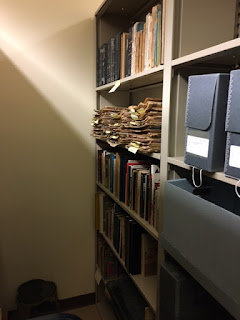Special Collections Internship at the University of Central Florida
Week 4: The Inside Scope of What I Do!
In this internship, I am learning how to be an archivist and what to expect if I want to specialize as a digital archivist. The Special Collections staff is small compared to other institutions so they do a little bit of everything. In other words, they do not necessarily concentrate on one task forever rather they work on the preservation of a collection and at the same time, they may work on digitization for another collection. From past blogs, I have mentioned that I have been organizing materials. Video 1 gives an overview of my daily tasks and my whereabouts. As a historian, this internship has exposed me to the ins and outs of what professional archivists do before I come in and do research. I am seeing it from another perspective, the back-story. In addition, the task I am doing will help me to adapt to places where the archival institutions are not organized so I have the skills needed to navigate and find the materials I am looking for in less resourceful settings. Not all places have all materials in the right location or may not have any archives, to begin with. Furthermore, I have been talking with David Benjamin, the department head and Burak Ogreten, Senior Archivist about reaching out again to Jose Guerra Alemán’s son and having a conversation with some questions on his father. This is another side of an archivist. An archivist can still be personable and can do oral interviews to expand one’s research. I hope that I can meet with him and find any new knowledge on Alemán that I can add to his biography. At the University of Central Florida Special Collections, I started the beginning stages of archival work and I do not have much of a specific direction for it has been untouched since it was brought in so I have the liberty to do what I think the organization should be and I am the only one who speaks Spanish so I have some jurisdiction of what certain materials should be written and translated in English or at least what documents can go where.
| Video 1. Tour Around the Special Collections Area. (Video Courtesy of Samuel Ortiz.) |



Comments
Post a Comment